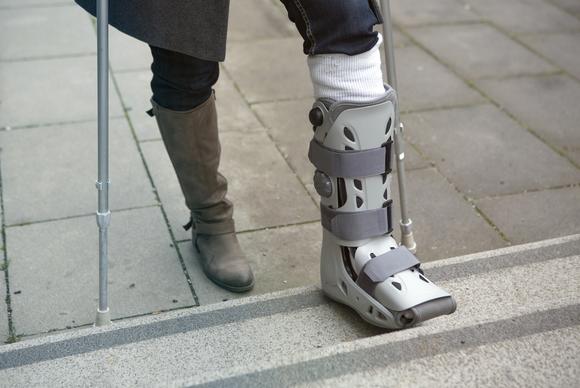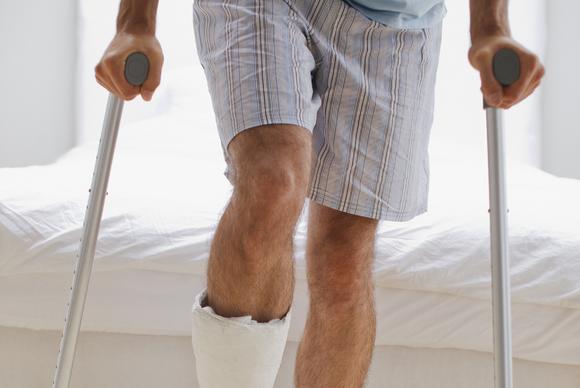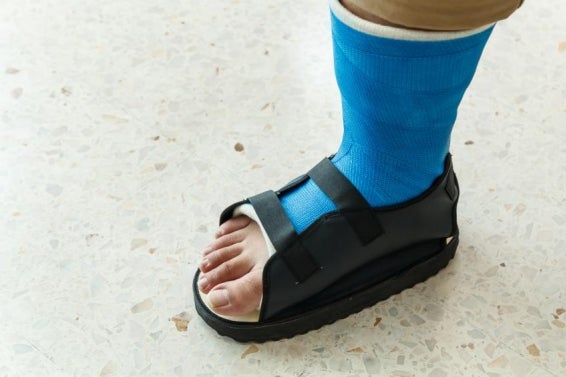View Providers

Get back on your feet with some recovery basics.
The end of the shinbone (tibia), the end of the other lower leg bone (fibula), and the talus bone make up your ankle joint. Ankle fractures and dislocations can be either simple—involving just one bone—or complex—involving multiple bones. Recovery depends on the type, location, complexity and treatment. Some fractures only need rest and protection, while others require surgery and weeks of rehabilitation.

1. Work with your doctor on goals for restoring pain-free ankle function.
Your recovery goal is to treat your symptoms and restore pain-free, pre-injury ankle function. This can take time and be quite challenging for some types of ankle fractures. In some cases, ankle function and walking gait may never return to pre-injury levels. Ask your doctor about the best strategies to reach these goals and what you can expect.

2. Manage most of your symptoms with rest and pain meds.
Common ankle fracture symptoms include pain, tenderness, bruising and swelling. You can manage these symptoms by following PRICE—protection, rest, ice, compression and elevation. This may be necessary for several days. Ask your doctor about taking over-the-counter pain relievers, such as ibuprofen (Advil, Motrin) or naproxen (Aleve). Complex ankle fractures may require more aggressive measures.

3. Follow your doctor’s orders on weight-bearing activities.
Depending on the severity of injury, some doctors allow weight bearing right away, while others recommend waiting several weeks. You can use crutches to get around if your doctor recommends keeping weight off the ankle. You may only need a rigid boot to provide stability if your doctor allows weight bearing. Once your doctor allows weight bearing, it’s important not to overload your bone. Depending on your age and the injury, it can take several months or even years to regain full bone strength.

4. Return to your activities gradually to avoid re-injury.
Your doctor may encourage you to move your ankle soon after the injury. If you have surgery, your doctor may recommend waiting longer. You’ll add activities and intensity gradually. Follow your doctor’s instructions for activities and movement. Doing too much too fast can cause problems, such as having the bone move out of position. It’s time to rest if your ankle starts to hurt. Ask your doctor when you can safely return to daily activities, work, and sports or other leisure activities.

5. Do your recommended exercises to build strength.
Physical therapy and therapeutic exercises will start once your fracture is stable. This includes range-of-motion, stretching, and strengthening exercises. Your doctor may recommend exercises you can do at home if you have a simple fracture. For complex cases, you may work with a physical therapist. These exercises can be painful at first. Ask your doctor or therapist how to manage the pain so you can reach your recovery goals.

6. Watch for complications and call your doctor for concerns.
Call your doctor right away if you have fever, color changes in the ankle or foot, numbness, inability to move your toes, more swelling than expected, or increased pain. These could be signs of a complication. Long-term, some people develop arthritis and chronic pain after an ankle fracture. Talk to your doctor if your symptoms persist or return after your foot heals.

7. Take steps to prevent future injuries.
If you have an ankle stress fracture, your doctor or therapist will talk to you about strategies to prevent future problems. This includes cross-training and alternating days of high- and low-intensity activities. Any type of fracture will benefit from building muscle strength around the bone. Just be careful to engage in new activities slowly. Eating a balanced diet that includes calcium and vitamin D for bone strength will also help. Ask your doctor whether you need supplements to reach the necessary daily intake.

Remember an ideal recovery takes time.
Ideally, your recovery after an ankle fracture or dislocation will return you to pre-injury ankle function without pain. This is possible in most cases, but you need to do your part to get there. Remember to start slow and go slow. Stressing the bone too soon can cause problems. And if you feel pain with an activity, it’s time to rest. Your doctor will check your progress as your ankle heals.




